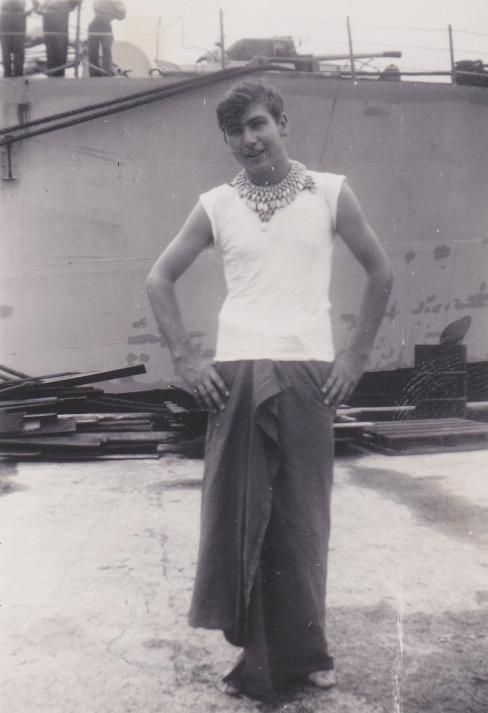settings
The Sex Lives of Cannibals vocabulary
37 vocabulary words, including people, places, music, artists, etc.
help & settings
[x]
-
lavalava
-
► definition
Definition:an article of daily clothing traditionally worn by Polynesians and other Oceanic peoples. It consists of a single rectangular cloth worn as a skirt. [...]Today the fashion remains common in Samoa, American Samoa, Tonga and parts of Melanesia and Micronesia. It is worn by men and women in uses from school uniforms to business attire with a suit jacket and tie.[...][It] is secured around the waist by an overhand knotting of the upper corners of the cloth; women often tuck the loose ends into the waistband, while men usually allow them to hang in front.text from Wikipedia, licensed under Creative Commons - Attribution - Sharealike photo: U.S. sailor trying on the local garb in Samoa, 1949(the ship USS Chehalis in the background, the day before it sank)photo used by permission.
photo: U.S. sailor trying on the local garb in Samoa, 1949(the ship USS Chehalis in the background, the day before it sank)photo used by permission.
► uses
Uses:
Every culture that has developed along the equator has very sensibly included skirtlike garb for men. Like most men in Kiribati, I generally wore a lavalava. Shorts were for formal wear. Pants were an imposition by an alien culture.
J. Maarten Troost. The Sex Lives of Cannibals. p.127 (2004)
---
She invariably wore a loose muslin or print gown, waistless, and fastened at the neck; underneath this was the ordinary Samoan lava lava or waist-cloth of navy blue calico.
Louis Becke. The Strange Adventure of James Shervinton (1902)

